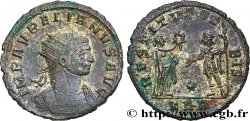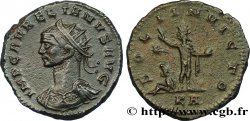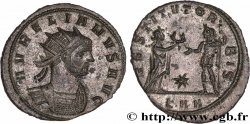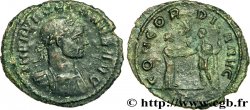brm_551732 - AURELIAN Aurelianus
Not available.
Item sold on our e-shop (2022)
Price : 115.00 €
Item sold on our e-shop (2022)
Price : 115.00 €
Type : Aurelianus
Date: automne 274 - printemps 275
Date: 274-275
Mint name / Town : Siscia
Metal : billon
Millesimal fineness : 50 ‰
Diameter : 22,5 mm
Orientation dies : 6 h.
Weight : 3,92 g.
Officine: 6e
Coments on the condition:
Exemplaire sur un flan large et ovale, idéalement centré des deux cotés. Magnifique buste et revers fantastique. Patine grise avec une argenture encore présente
Catalogue references :
Predigree :
Exemplaire provenant de la collection M. P
Obverse
Obverse legend : IMP C AVRELIANVS AVG.
Obverse description : Buste radié et cuirassé d’Aurélien à droite avec pan de paludamentum, vu de trois quarts en avant (B01).
Obverse translation : “Imperator Cæsar Aurelianus Augustus”, (L’empereur césar Aurélien auguste).
Reverse
Reverse legend : CONCORDIA MILITVM// XXIVI.
Reverse description : Aurélien lauré, en toge, debout à droite donnant la main droite à Concordia (la Concorde), drapée, debout à gauche.
Reverse translation : “Concordia Militum”, (La Concorde des soldats).








 Report a mistake
Report a mistake Print the page
Print the page Share my selection
Share my selection Ask a question
Ask a question Consign / sell
Consign / sell
 Full data
Full data



